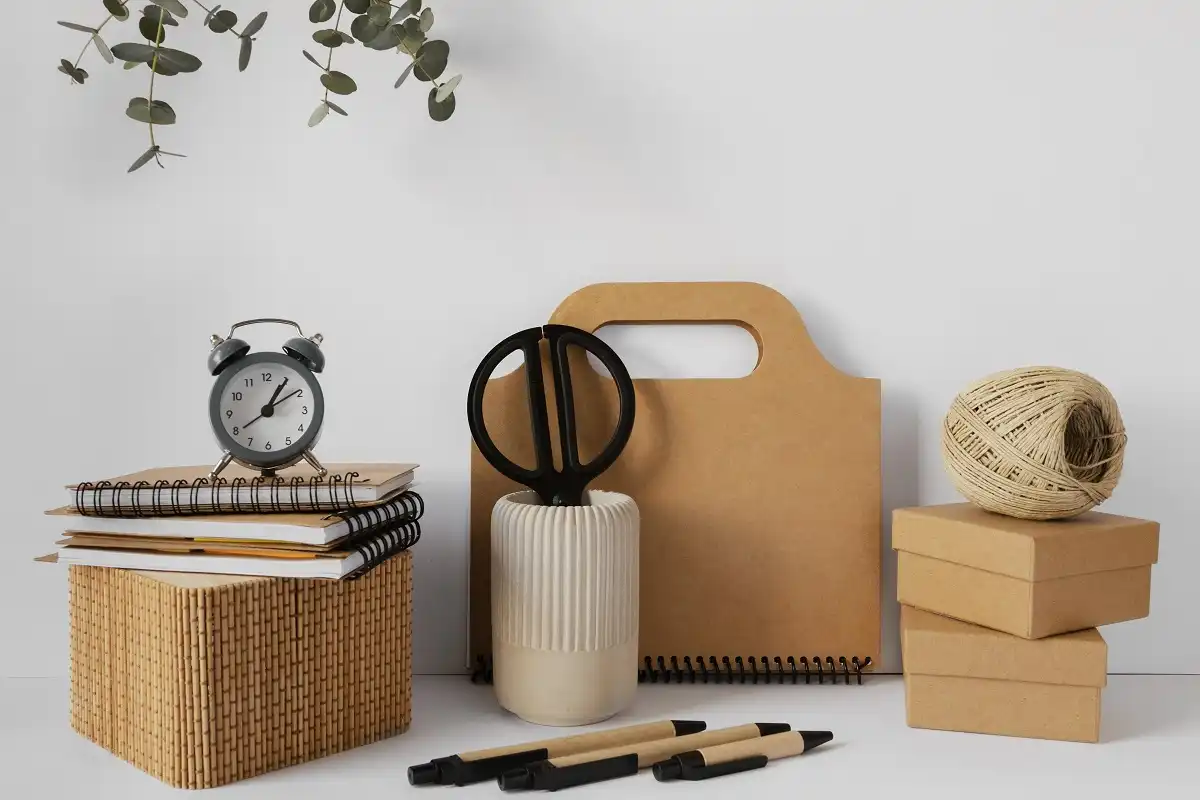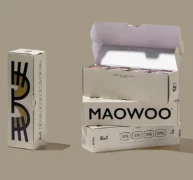Everyone is talking about sustainable packaging; it is the norm of the day. But one thing is sure: your customers will not compromise on this. Whenever they buy, they keep in mind whether your packaging boxes are sustainable or not. They care about the environment and will go to any extent for that.
So, do you know what sustainable packaging is, why it matters, what it is, and its types? This blog will give all of this information. Also, you will find best practices in this market with their benefits. We will cover biodegradable, recyclable, and compostable materials in this category.
It will be a guide to help your products find sustainable, eco-friendly boxes for your business and daily needs.
Let’s kick this off!
What Is Sustainable Packaging? The 6 Core Principles!

When discussing sustainable packaging, multiple things and systems go into it. There are some critical factors that companies need to keep in mind to make their products sustainable:
- Reducing The Usage of New Resources
- Use of Renewable Materials
- Recyclability
- Biodegradability and Compostability
- Energy Efficiency
- Life Cycle Assessment
Now, using these principles can help improve the overall impact of your packaging on the environment. How? This is how:
Why Is Sustainable Packaging Important?
Here are some reasons to consider:
Waste Reduction
When you optimize your packaging design and create less waste and the overall material volume for these boxes, magic happens! The total amount of waste ending up in landfills is reduced. This also helps to optimize the use of natural resources for packaging.
The thing is, you don’t want to consume resources, and this helps the environment. So, waste reduction is an integral part of every sustainable packaging system you must keep in mind.
Even Sustainable packaging design is a big part of keeping in mind to ensure good outcomes in any product.
Saving Energy
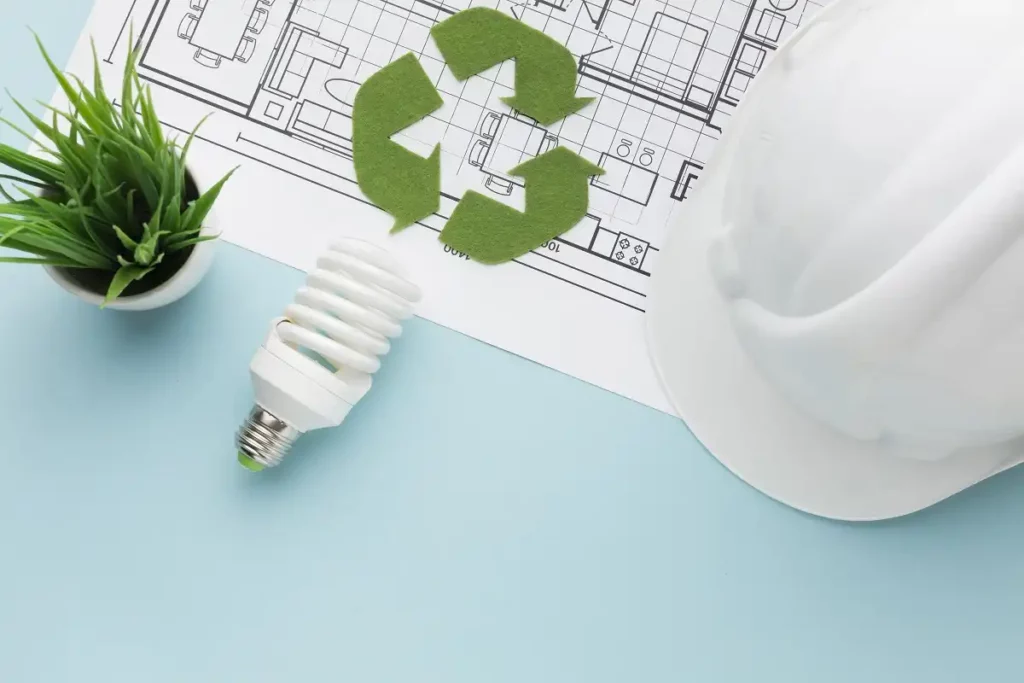
Now, energy is one of the most significant resources the environment provides us. It helps you with biofuels and other resources that help us create energy. When you save energy, it means you protect the environment from exploitation.
This means you need to conserve energy usage in packaging processes as well.
Saving the Environment From Damaging Gasses Emissions
Another lousy impact of the production of packaging materials on the environment is greenhouse gases. One thing is sure: the six principles we mentioned ensure we reduce the emission of these gasses.
For instance, with these principles, we can do away with multiple gases that destroy our planet.
Packaging Processes And Their Harmful Impacts
Here is a list of harmful byproducts with the names of packaging processes that create them:
Greenhouse gases:
- The use of Energy-intensive manufacturing processes for packaging
- Fossil fuel use in the process of combustion
- Transportation emissions with non-sustainable methods
Substances Harmful to the Ozone
- Such substances usually come from foaming and blowing processes during this process.
Getting Rid of Landfills
Another thing to keep in mind is the landfills you create during packaging production. This process can cause energy use, methane emissions, and environmental issues. How? This is how:
- Avoiding landfills may help encourage companies to recycle materials.
- It may even help reduce the energy usage of this process during transportation.
- At the same time, it can help reduce methane emissions in the environment. This gas is produced during the decomposition of landfill materials.
- Moreover, you can reduce the chances of soil and water contamination by eliminating landfills.
The Sustainable Methods To Reduce These Issues
Here is a list of sustainable methods that can omit and reduce these issues to save the environment:
- Use of sustainable packaging materials that reduce the need for new material production.
- The use of water-based inks can reduce air pollutants.
- Try out solvent-free adhesives to avoid volatile organic compounds.
- At the same time, using energy-saving manufacturing can do the job.
- Also, the use of renewable energy sources can help you get rid of these issues.
- Moreover, manufacturers should also do proper waste management to reduce waste production.
- Ozone-friendly alternatives can also play a massive role in saving the environment.
Types of Sustainable Materials
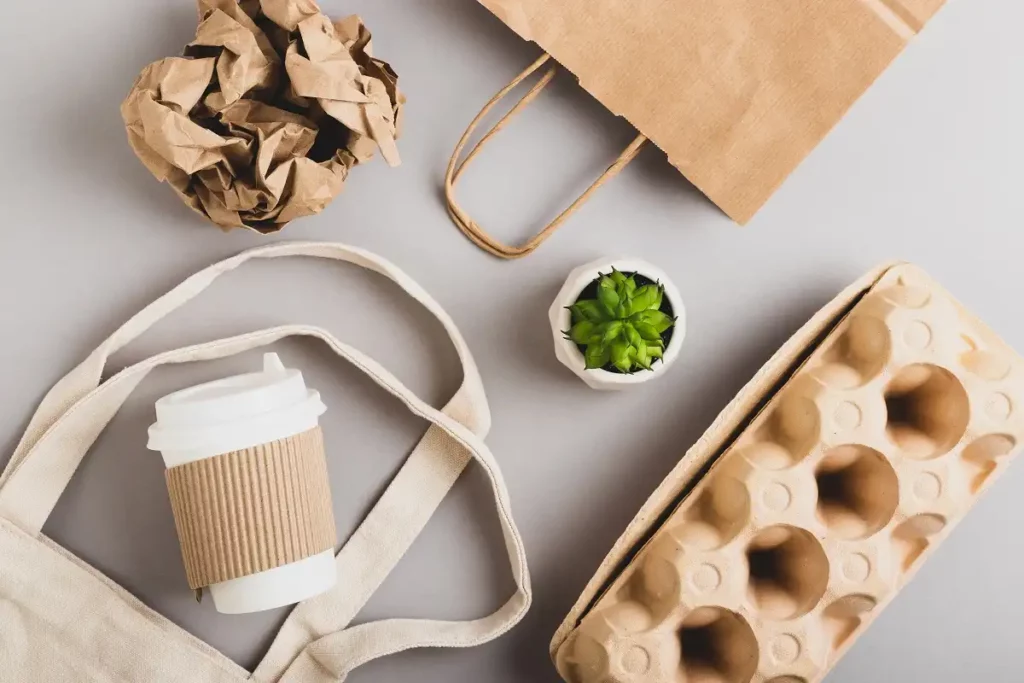
There are four basic types of functionalities when we talk about sustainable materials. These are:
- Biodegradable types
- Compostable ones
- Recycled ones
- Reusable types
Now, when we talk about the names of these material types, there are many. But when it comes to functionalities, they help offer money functions required to save the environment.
They save energy, avoid the exploitation of resources, help improve the environment, and reduce greenhouse gas emissions.
Biodegradable Materials
Now, when we talk about the best biodegradable materials, this is the list to keep in mind:
- PLA (polylactic acid)
- PBAT (polybutylene adipate terephthalate)
- PHA (polyhydroxyalkanoates)
- Starch-based bioplastics
- Cellulose-based materials
- PCL (polycaprolactone)
- Bio-based polyesters
- Algae-based materials
PLA (polylactic acid)
When we talk about PLA, we get multiple features you or your provider can find. These materials come from plant-based sources like cornstarch and sugarcane.
Here are some perfect reasons why you should use them as an end user or a manufacturer for sustainability factors:
- Renewable resource
- Reduced carbon emissions
- Reduced dependency on fossil fuels
- Composability
- Versatility
- Non-toxic
- Energy efficiency
- Reduced landfill waste
- Biodegradability
- Positive brand image
These factors cover almost all the principles sustainable packaging materials must carry. So, biodegradables are excellent materials that can help the packaging industry save the planet.
PBAT (polybutylene adipate terephthalate)
This is what this biodegradable material provides:
- Better flexibility and durability
- Compatibility with a wide range of bioplastics
- At the same time, it provides you with improved resistance to low temperatures.
- Moreover, you get increased resistance to oils
- Also, it offers improved processability in co-extrusion and lamination for your work.
These factors can help your goal of compliance with the golden sustainability principles during the packaging process.
PHA Material For Sustainability
Now, PHA is an excellent material that provides biodegradability and composability. At the same time, it also offers versatile applications and is a quietly renewable source. It is another material from sugars, and microorganisms produce plant-based oils.
As they are pretty biodegradable, they are a great choice compared to many other materials, including traditional plastics. At the same time, its personality allows you to create fibers containing molded products and film them.
As they come from renewable resources, you do not have to depend on fossil fuels for their production. You can even rely on it to produce harmful chemicals during the degrading process.
Starch-Based Bioplastics
Now, these plastics can help you get many benefits with sustainable features. We can drive it from wheat, potatoes, corn, and other similar plant sources. The reality about the material is that you can produce it from starch, a natural polymer.
When we compare natural polymers with synthetic ones, they can meet your sustainability goals. For instance:
- They are non-toxic
- You do not have to worry about extra energy consumption during their production.
- At the same time, these would have a lower carbon footprint.
On the other hand, synthetic polymers do not offer any of these features.
Here are their names:
- Starch-based coatings
- Films
- Thermoplastic starch (TPS)
- Blends and composites
- Starch-based fibers
Cellulose-Based Materials
Now, these materials have multiple benefits you would be looking for in packaging materials. Here are some features to keep in mind:
They come from renewable resources with these chances of depletion in comparison
You also get a reduced carbon footprint with them, and you do not have to depend on fossil fuels that much.
They are also biodegradable, so we should not worry about toxin production when they decompose.
Here are the names of these materials with their chemical or technical names mentioned as well.
- Cellulose Nanocrystals (CNC)
- Cellulose Acetate (CA)
- Methyl Cellulose (MC)
- Cellulose Triacetate (CTA)
- Ethyl Cellulose (EC)
- Microcrystalline Cellulose (MCC)
- Regenerated Cellulose (viscose, rayon)
- Hydroxypropyl Cellulose (HPC)
Bio-Based Polyesters
Using these can be a versatile way to beat traditional plastics. They have high-temperature resistance, which means they can replace these plastics with an excellent feature for packaging. At the same time, it provides high moisture resistance.
One thing you should always know is that a product provides motion resistance; it can also protect it. This boils down to this material saving your food products from wastage. At the same time, it has fantastic mechanical strength to keep your products and itself. So, they are an excellent choice for sustainable food packaging boxes.
Moreover, their gas barrier can help reduce your products’ need for additives and preservatives. This mere factor can save the planet against toxins. Some common such materials:
- Polyethylene Furanose (PEF)
- Polyhydroxyalkanoates (PHA)
- Polylactic Acid (PLA)
- Polybutylene Succinate (PBS)
- Polybutylene Adipate Terephthalate (PBAT)
- Polycaprolactone (PCL)
Algae-Based Materials
All of these materials have unique features when comparing them with each other.
- Algae-based bioplastics can provide you with fantastic transparency, strength, and flexibility.
- Films provide resistance against moisture, gases, and UV light.
- Coatings give you protection against microbes and fungi.
- Using foams provides you with insulation properties and temperature control.
- Resins can be an excellent use for electronics and flammable products.
So, they all meet many criteria in your packaging production needs to help with sustainability.
Compostable Packaging Materials
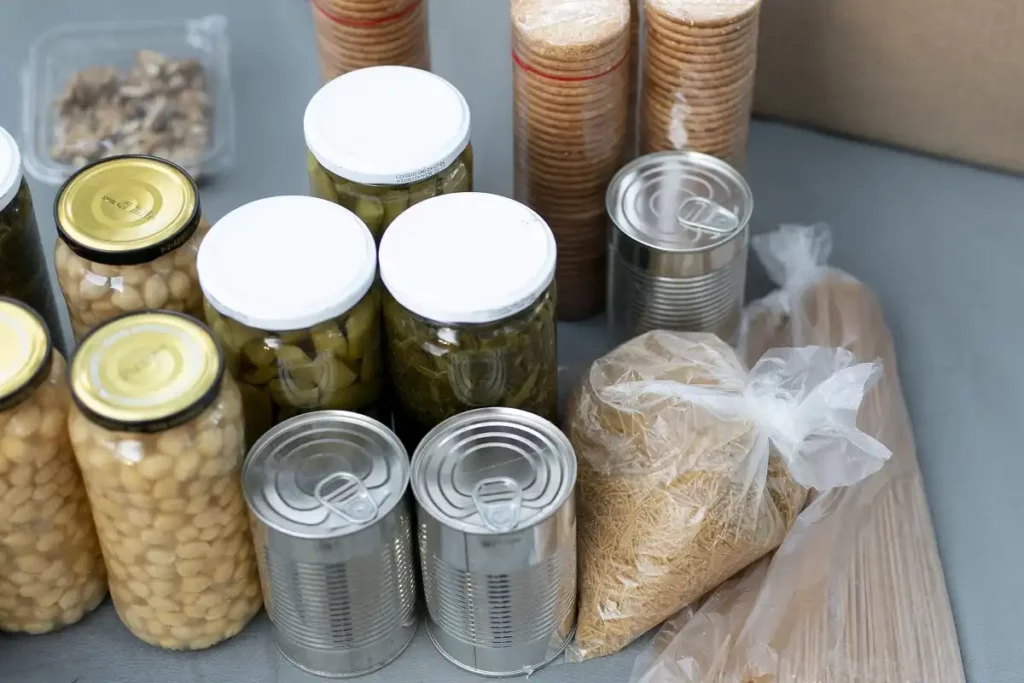
When discussing compostable packaging materials, one thing is sure: they also carry biodegradable properties. Still, it would help if you remembered that they are next-level materials compared to biodegradable ones.
Here are the ones that offer composability as well:
- Wheat straw
- Paper-based materials
- Mushroom packaging
- Cork
- Bamboo
Wheat Straw
When discussing wheat straw, we have multiple unique benefits that other sustainable materials may not have. For instance:
- This material comes in the form of an agricultural byproduct. This byproduct can help save agriculture waste production and help support a circular economy.
- You can use them to enhance the richness of the soil composting.
- Moreover, they have a natural appearance and texture, which can be unique to your packaging boxes.
- Production of this raw material also allows the absorption of carbon dioxide from the atmosphere, helping the environment.
- At the same time, you can source it from local areas, reducing transportation costs.
- Using this byproduct also reduces the production of air pollution, which would be a problem when this material is burnt.
- Also, they are among the materials that are easy to find and abundant.
Paper-Based Materials
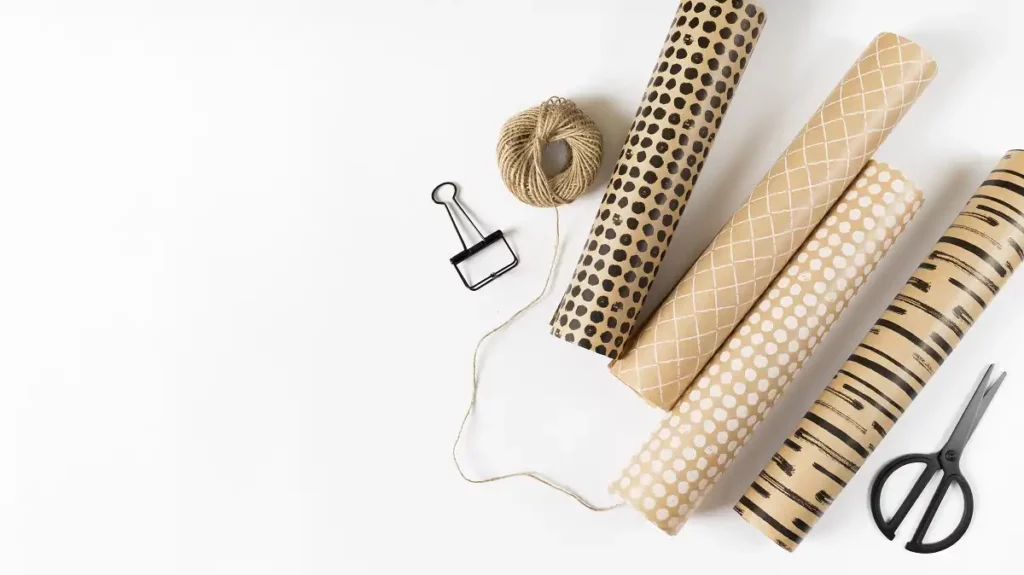
When it comes to paper-based materials, there’s a long list of them that can offer compostability. Here are the names:
- Kraft paper
- Cardboard
- Corrugated cardboard
- Bamboo paper
- Recycled paper
- Parchment paper
- Paperboard
- Molded pulp
- Bagasse (sugarcane fiber)
- Newsprint
We’ll discuss three of the most important of these.
Kraft paper
Here are some interesting factors about this one:
This material comes from a material that uses carbon dioxide during production, so their products can help the environment.
Still, it can resist moisture and grease content, making it useful for multiple packaging applications.
Its natural decomposition turns it into compost that you can enrich the soil with.
Cardboard For Packaging
Cardboard is another material you must know for its positive impact on the environment:
A significant fact about this material is you can decompose any size of their boxes. This versatility is from cereal boxes to single-layer cardboard boxes; all will spoil quickly.
Also, moisture retention can help you make the decomposition process faster.
Moreover, you can use it to prevent weeds in your garden, leading to a better experience.
Recycled Paper
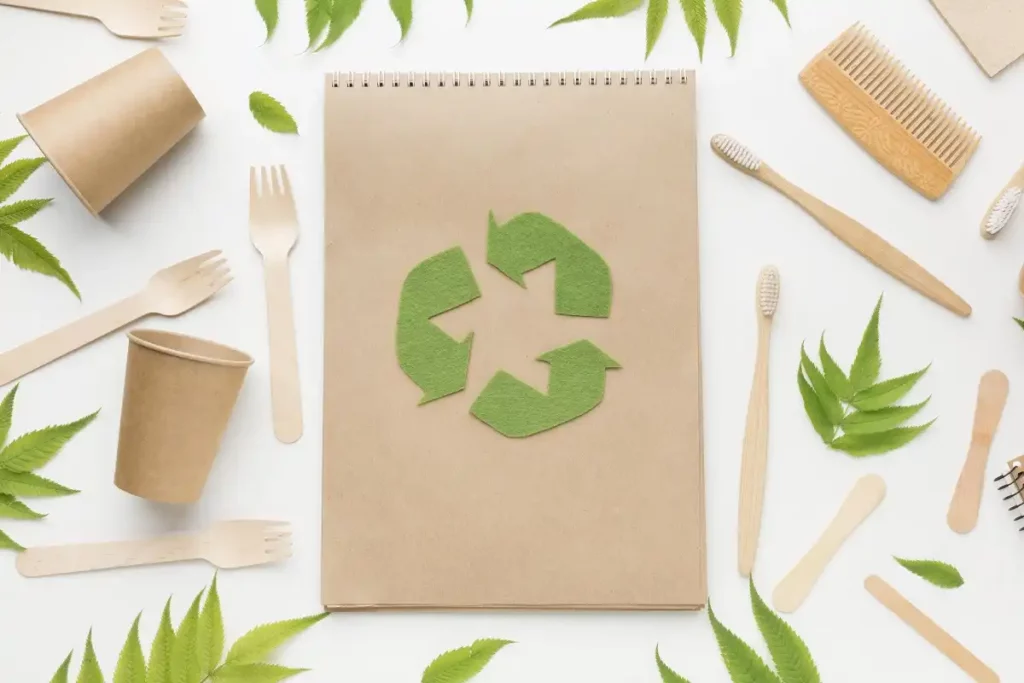
It is another material that can help you benefit from conserving resources and the environment. For instance:
The water consumption required for recycled paper production is less than virgin paper.
At the same time, you can reduce the amount of deforestation that virgin paper production requires.
Another great benefit of this procedure and material is you are not polluting the air and water that virgin paper causes.
Molded Pulp
Manufacturing molded pulp does not require a massive system in the economy. You can create them without putting too many resources in or utilizing too much time. At the same time, it is a lightweight material, making its transportation less costly than others.
Recyclable Packaging Materials
Recycling may not be the best idea for sustainability and conserving the environment. Still, it has multiple benefits for the planet, which you should know about.
Pros of Recyclable Materials
These benefits may be just like other sustainable materials, but some may be unique.
You can also use them to conserve the environment without exploiting new ones.
At the same time, they can help you get rid of waste or pollution.
Now, this does not reduce its abilities, and you can get some benefits others would not offer.
Cons of Recycling Materials
- The recycling process is not very easy and requires proper education to execute it.
- Due to this reason, a significant part of such materials is never recycled or not appropriately recycled.
- At the same time, it needs infrastructure building for this purpose, which is quite complex and costly.
- Moreover, these materials lose their quality during this process, which can harm their purpose.
- The demand for such products fluctuates, which makes it less preferable for some markets.
Top Recycled Materials For Packaging
Recycled materials have multiple benefits that we could talk about after this list of names:
- Recycled plastic
- Recycled polyethylene terephthalate (PET)
- High-density polyethylene (HDPE)
- Glass
- Metal
- Textiles
- Wood
- Corrugated board
- Recycled paper
- Cardboard
Regarding the best of these, we have a shortlist that can give you the most impactful ones in contemporary times.
Materials With the Highest Positive Impact
Here is a list of the materials in this category with the highest positive environmental impact when recycled.
- Paper
- Recycled cardboard
- Recycled glass
- Metal
- High-density polyethylene (HDPE)
Recycled Paper
Although recycled paper has multiple benefits, there would be a repetition of the ones you get with biodegradable materials. Here, we have some unique ones you might not have read before.
The use of recycled paper can help you avoid landfills.
At the same time, you can preserve animals’ natural habitats by reducing deforestation.
Recycled Cardboard
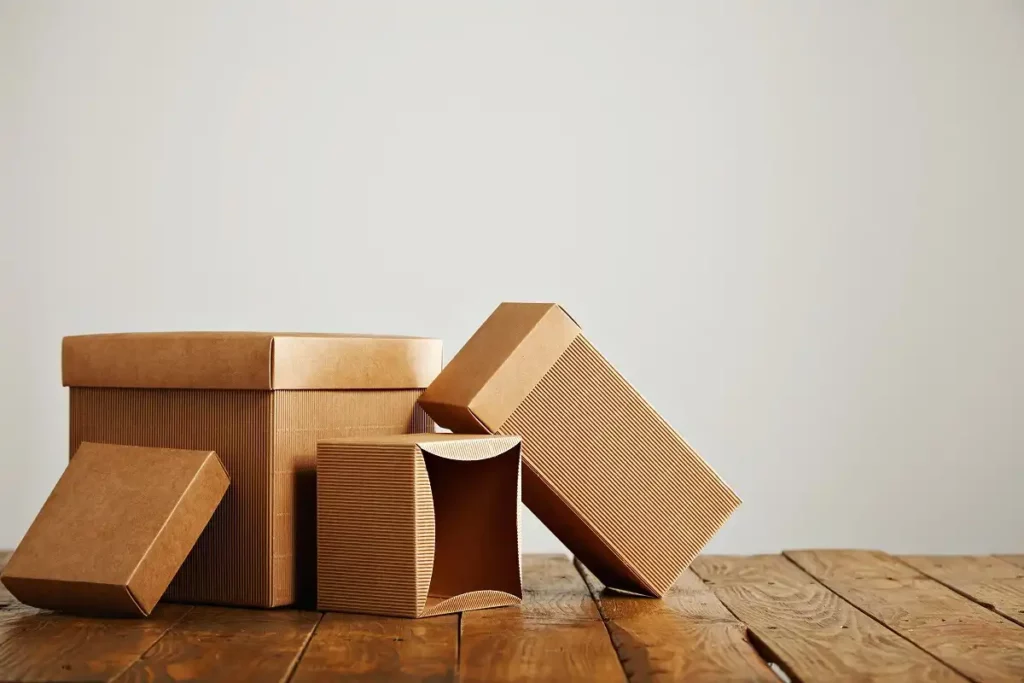
Recycling cardboard has its benefits, so here are some stacks and figures you would love about it:
- When we recycle one ton of cardboard, we save 17 trees, 700 gallons of water, and 4000 kilowatt hours of energy.
- A fun fact is that cardboard is one of the most recycled materials globally.
- It takes breaking down 18 pieces and mixing them into water. And it is processed to make cardboard products.
- At the same time, it is one of the few materials you can recycle multiple times.
PackagingX Takes Care Of This All!
Caring for all the best material types for box production is not easy. So, we have every means to provide you with the most sustainable boxes for your business. Also, if you are a provider, we can simplify your work with the most impressive boxes. Order now at PackagingX! Care about the planet and make it a better place to live for us and the coming generations!
FAQs
What are some of the best examples of sustainable packaging?
Here is a detailed list of materials that can help save the planet and the environment.
- Paper-based materials
- Mushroom packaging
- Paper
- Recycled cardboard
- Recycled glass
- Cork
- Bamboo
- PLA (polylactic acid)
- PBAT (polybutylene adipate terephthalate)
- PHA (polyhydroxyalkanoates)
- Metal
- PCL (polycaprolactone)
- Bio-based polyesters
- High-density polyethylene (HDPE)
- Wheat straw
- Starch-based bioplastics
- Cellulose-based materials
- Algae-based materials
What are the best practices in the recycling of materials?
When it comes to the best practices in the recycling process, here’s a list of them:
- Categorizing recyclable sources in different categories can help the recycling process with better time management.
- At the same time, there should be a collection and sorting system.
- Shredding and compacting materials would also be quite helpful for
- Moreover, the development of infrastructure can help this process in many ways.
Are sustainable packaging materials cost-effective in comparison to others?
Multiple factors come into play when we talk about sustainable packaging costs. For instance, producing and recycling some materials may be cost-effective in the sustainable category. On the other hand, some materials cost you less without being sustainable.
How can individuals impact sustainability in packaging products?
Choosing such products is an individual’s most significant impact on the sustainability market. At the same time, they can spread awareness among consumers on why they should adopt such goods. Looking forward to attending sustainable packaging trends would also greatly help the planet.
What are the main ways by which sustainable packaging helps the environment?
It helps by reducing costs, saving resources, producing greenhouse gas emissions, and protecting the environment. For instance, it keeps the planet from toxins. At the same time, it helps protect animals and forests from exploitation and extinction.
 Cosmetics Boxes
Cosmetics Boxes Display Packaging
Display Packaging Eco Friendly Boxes
Eco Friendly Boxes Food & Beverage
Food & Beverage Gift Boxes
Gift Boxes Metalized Boxes
Metalized Boxes Retail Boxes
Retail Boxes View all industries
View all industries Custom CBD Boxes
Custom CBD Boxes CBD Display Boxes
CBD Display Boxes CBD Tincture Boxes
CBD Tincture Boxes E-Liquid Boxes
E-Liquid Boxes Vape Cartridge Boxes
Vape Cartridge Boxes Bottom Closure
Bottom Closure Fold & Assemble
Fold & Assemble Figure & Pattern
Figure & Pattern Rectangular
Rectangular Top Closure
Top Closure